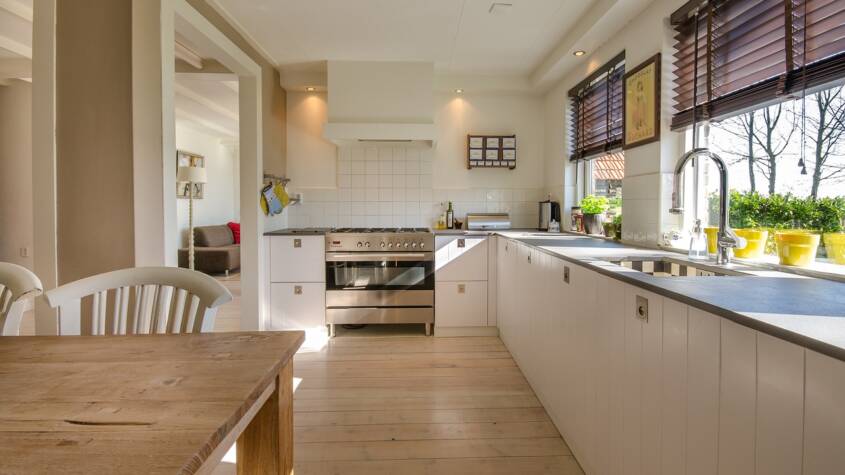
Choosing kitchen cabinets Vaughan can be a transformative decision for any home renovation. Quality cabinets not only enhance the aesthetic appeal of a kitchen but also improve functionality and organization. Homeowners in Vaughan can find a variety of options that suit their style and budget, whether they prefer modern sleek designs or timeless traditional looks.
Local suppliers and manufacturers in Vaughan offer an extensive range of materials, finishes, and styles. This variety allows homeowners to customize their selections to create a space that reflects their personality and meets their cooking and entertaining needs. With the right guidance, selecting the perfect kitchen cabinets becomes an exciting part of the renovation journey.
Exploring options within Vaughan can lead to discovering unique, high-quality cabinets that set the tone for the entire home. Investing time in research and considering local resources can pay off significantly, providing both aesthetic and practical benefits.
Choosing the Right Kitchen Cabinets
Selecting kitchen cabinets involves considering various factors that impact both practicality and aesthetics. Materials, style, and functionality are vital for creating a kitchen that meets individual needs.
Materials and Durability
The choice of material is crucial for durability. Common options include:
- Wood: Solid wood offers longevity and can be refinished.
- Plywood: A strong alternative that resists warping.
- MDF: Medium-density fiberboard is cost-effective and ideal for painted finishes.
Durability should be matched with intended use. For high-traffic kitchens, opt for materials that withstand wear and tear. Consider the cabinet’s finish as well; options range from laminate to varnish, affecting both appearance and maintenance requirements.
Style and Aesthetics
Aesthetic choices can influence the overall appeal of a kitchen. Styles vary widely, including:
- Traditional: Offers classic charm with intricate details.
- Modern: Emphasizes clean lines and minimalist designs.
- Rustic: Utilizes natural textures and unfinished looks.
Cabinets can be customized with colors and hardware that suit the surrounding decor. Factors like cabinet door design, finish, and trim can enhance visual interest. Choosing a cohesive style helps in unifying the kitchen’s overall appearance.
Functionality and Storage Solutions
Functionality should not be overlooked. The cabinet design greatly affects storage efficiency. Popular storage solutions include:
- Pull-out shelves: Optimize space and accessibility.
- Lazy Susans: Ideal for corner cabinets to minimize lost space.
- Drawer dividers: Organize utensils and small items.
Assessing space and specific storage needs plays a vital role in cabinet selection. Consider incorporating innovative designs like deep drawers for pots or built-in organizers for toiletries. Ensuring optimal functionality can greatly enhance kitchen usability.
Installation and Maintenance
Installing kitchen cabinets requires careful attention to detail and ongoing maintenance to ensure longevity. The following subsections provide insights into professional installation options, DIY tips, and proper cabinet care.
Professional Installation Services
Hiring a professional for cabinet installation can streamline the process and minimize errors. Professionals possess experience and expertise, which ensures a precise fit and finish. They can handle complex layouts, ensuring cabinets are level and secure.
Cost varies based on cabinet size and layout complexity. For example, full kitchen installations can range from $1,500 to $5,000 on average. Interior designers and contractors often provide consultation services to help homeowners select the best options for their space.
Furthermore, professionals may offer warranties on their work, providing peace of mind. This can be particularly beneficial for those investing in expensive cabinetry.
DIY Installation Tips
For those opting for a DIY approach, planning and preparation are essential. Begin by measuring the kitchen space accurately and sketching a layout. Proper tools like a level, drill, and stud finder are crucial for a successful installation.
Installation typically involves securing the upper cabinets first before proceeding to the base cabinets. This method helps in achieving a seamless look. It’s advisable to use shims to level cabinets and ensure they are flush against the wall.
Safety should also be a priority. Using a helper reduces the risk of injury and ensures cabinets are handled with care. Additionally, ensuring proper wall support prevents future issues with sagging or misalignment.
Cabinet Care and Upkeep
Maintaining kitchen cabinets involves standard cleaning and occasional adjustments. Regular dusting with a soft cloth can prevent buildup that may harm finishes. For deeper cleaning, mild soapy water works well; avoid harsh chemicals that can damage surfaces.
Inspecting hinges and hardware periodically is essential for functionality. Tightening screws and lubricating hinges can prevent squeaks and misalignments.
Consider resealing wooden cabinets every few years to protect against moisture and staining. Keeping the area around cabinets dry is key to preventing mold and mildew growth, which can affect both the cabinets and overall kitchen hygiene.
Recycling Drop Off Locations: Find Convenient Sites for Sustainable Waste Disposal
Finding convenient recycling dropoff locations can greatly simplify the process of sustain…










